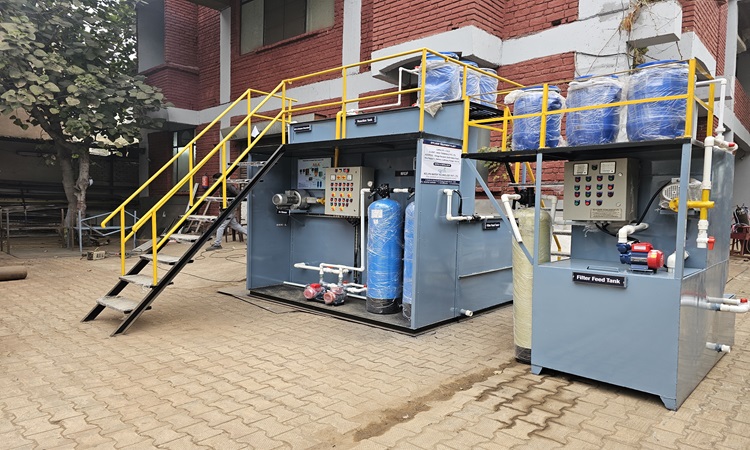
With increasing urbanization and industrial growth, the demand for clean water is rising at an unprecedented rate. At the same time, wastewater generation from residential, commercial, and industrial activities is also increasing. This poses a serious threat to both the environment and public health. The solution? Sewage Treatment Plant — an essential infrastructure for sustainable water management.
Sewage Treatment Plants play a critical role in ensuring that wastewater is treated effectively before being released into natural water bodies or reused for various non-potable purposes.
What is a Sewage Treatment Plant?
A Sewage Treatment Plant (STP) is a facility designed to treat wastewater generated from households, commercial buildings, and industrial processes. The primary objective is to remove harmful contaminants—such as organic matter, pathogens, and chemicals—from sewage before discharging the treated water into the environment or reusing it.
STPs are essential for preventing water pollution, protecting ecosystems, and promoting sustainable reuse of water, especially in water-scarce regions.
Why Are Sewage Treatment Plants Important?
The untreated discharge of sewage can lead to:
- Contamination of water bodies
- Spread of waterborne diseases
- Degradation of aquatic ecosystems
- Unpleasant odors and unhygienic conditions
- Legal penalties for non-compliance with environmental regulations
Key Stages of Sewage Treatment
Sewage treatment typically involves three major stages:
- Primary Treatment
This is the first stage where physical processes remove solid waste materials. Wastewater passes through screens that trap large objects (plastic, sticks, rags), followed by sedimentation tanks where heavier solids settle at the bottom as sludge.
- Secondary Treatment
In this stage, biological processes are used to break down dissolved and suspended organic matter. Microorganisms (mainly bacteria) digest organic pollutants in aeration tanks. This is followed by a secondary clarifier where the biomass (activated sludge) settles, separating clean water from biological solids.
- Tertiary Treatment
Tertiary treatment is an advanced filtration process to remove remaining impurities, including nutrients (like nitrogen and phosphorus), pathogens, and trace chemicals. Methods include:
- Filtration
- Disinfection (UV or chlorination)
- Membrane technologies (like MBR or RO)
Components of a Sewage Treatment Plant
A well-designed STP consists of several integrated units:
- Inlet chamber – Receives raw sewage
- Screening unit – Removes large debris
- Grit chamber – Eliminates sand, gravel
- Primary clarifier – Settles heavy solids
- Aeration tank – Supports biological treatment
- Secondary clarifier – Settles microbial biomass
- Sludge digester – Stabilizes organic sludge
- Disinfection unit – Kills harmful microorganisms
- Treated water tank – Stores clean water
Types of Sewage Treatment Plants
There are several types of STPs, each suited to different applications:
- Conventional Activated Sludge Plant
Uses aeration and biological treatment to break down organic matter. Suitable for large municipal or industrial applications.
- Sequencing Batch Reactor (SBR)
A time-sequenced, batch-based process ideal for compact installations with varying inflows.
- Moving Bed Biofilm Reactor (MBBR)
Uses biofilm carriers to enhance microbial activity. Ideal for industrial units with fluctuating loads.
- Membrane Bioreactor (MBR)
Combines biological treatment and membrane filtration. Produces high-quality effluent suitable for reuse.
- Packaged STP
Prefabricated and compact systems designed for small housing societies, hotels, schools, or commercial spaces.
Benefits of Sewage Treatment Plants
Implementing an STP offers a wide range of environmental, social, and economic benefits:
- Environmental Protection
STPs prevent the release of untreated sewage into rivers, lakes, or seas—helping conserve aquatic ecosystems and biodiversity.
- Health and Hygiene
Treated sewage eliminates harmful pathogens, reducing the risk of waterborne diseases and promoting public health.
- Water Reuse
Treated wastewater can be reused for:
- Flushing toilets
- Gardening and landscaping
- Industrial cooling
- Construction purposes
This significantly reduces freshwater demand.
- Sludge Utilization
Stabilized sludge from STPs can be used as organic fertilizer or bioenergy source, supporting circular economy practices.
- Regulatory Compliance
STPs help organizations and housing societies meet pollution control board norms, avoiding penalties and shutdowns.
STPs in Smart Cities and Sustainable Infrastructure
As smart cities emerge, STPs are becoming integral to green infrastructure planning. Many urban planners now incorporate decentralized sewage systems and IoT-based monitoring to enhance efficiency and transparency.
Modern STPs are also aligned with SDG 6 (Clean Water and Sanitation) and SDG 11 (Sustainable Cities and Communities) set by the United Nations.
Conclusion
Sewage Treatment Plants are the backbone of sustainable water and waste management systems. By treating and transforming wastewater into a valuable resource, STPs not only protect the environment but also open opportunities for water reuse and circular economy practices.
Whether in a residential society, commercial establishment, or industrial facility, installing a reliable STP is not just a regulatory requirement but a responsible choice toward a cleaner, healthier, and more sustainable future.



